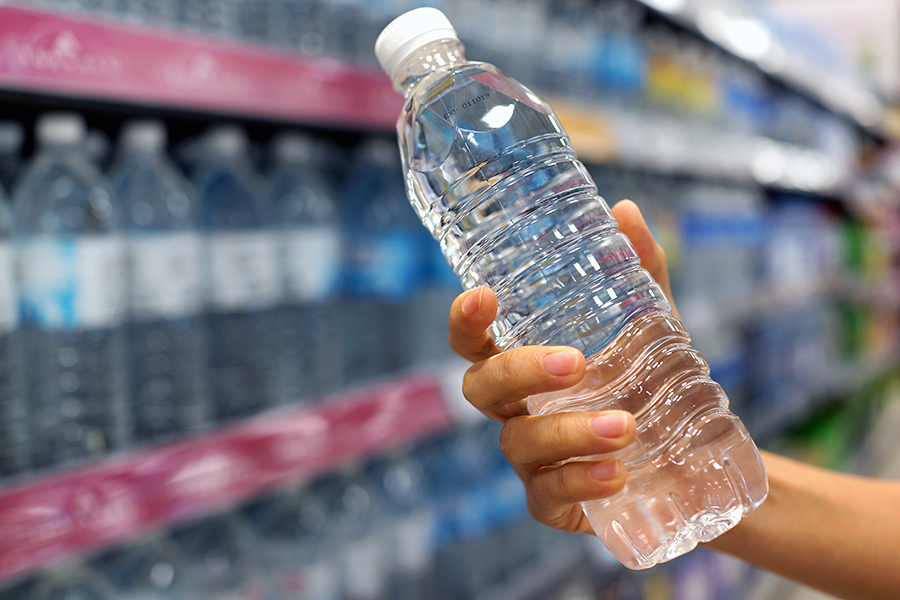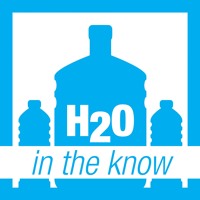International Bottled Water Association | Media Statement | April 18, 2024

However, this year’s Earth Day theme of “end plastics for the sake of human and planetary health” fails to acknowledge the value of plastics in everyday life—serving useful, and in some cases critical, purposes in the medical field and food and beverage industries. In addition, Earth Day organizers seem unaware that scientific evidence shows that the use of plastic in recyclable beverage containers, instead of other materials such as can, cartons, or glass, drastically reduces greenhouse gas (GHG) emissions globally. Encouraging people to switch from plastic to those alternative packaging materials will do more harm to the planet than good, says IBWA.
On average, plastic alternatives use 3 to 14 times more resources (energy, GHG, and solid waste).
Food and beverage plastic packaging has improved health, safety, and convenience in our everyday lives. The plastics used for bottled water (typically polyethylene terephthalate, or PET; high-density polyethylene, or HDPE; and polycarbonate, or PC) are U.S. Food and Drug Administration (FDA) approved for food contact and are safe and hygienic packaging solutions for bottled water. This packaging allows safe and healthy bottled water to be available anywhere across the world.
All empty plastic bottled water containers, which include individual-sized bottled water containers and larger-sized bottles (such as 1-, 2.5-, 3-, and 5-gallon containers)—are all 100% recyclable and can be used again and again to create new products, including new bottled water containers. Recycling plastic bottled water containers is emblematic of the benefits of a circular economy, illustrating a proven action to reduce the need for virgin plastics and decrease the use of natural resources.
“On this Earth Day, it’s important for people to understand the facts about plastic, not repeat unsubstantiated claims they’ve read on the internet,” says Jill Culora, IBWA’s vice president of communications. “Numerous life cycle analyses (LCAs) show that plastic, the consumer’s preferred packaging according to research by the Beverage Manufacturing Corporation (BMC), is also the packaging material with the least impact on the planet, emitting the fewest GHGs and using the least energy and water to produce.”
Those LCA results are supported by data from the global consulting firm McKinsey & Company, which highlights the important role plastic can play in reducing GHGs. Its “Climate impact of plastics” report concludes that “PET bottles have the lowest [GHG] emissions because of their lightweight properties and the low amount of energy required to produce them. By contrast, aluminum cans have two times the emissions of PET bottles, and emissions from glass bottles are three times higher.” McKinsey & Company included PET soda bottles in its report; but because PET bottled water bottles weigh significantly less than PET soda bottles (8.3 and 22.2 grams respectively), it is highly likely that the report would have found an even greater disparity between GHG emissions when compared with aluminum cans and glass bottles.
Environmental Impact of Drink Packaging
Trayak LLC, a sustainability consulting firm, conducted an LCA for IBWA, which measured several variables to determine the overall environmental impact of specific packaging types, including PET water bottles, PET soda bottles, glass bottles, canned water, and beverage cartons. Its conclusion: PET water bottles have a lower environmental impact than all other packaged beverage containers.
(Weights below are for individual 16.9 oz containers. Other values represent 1 million 16.9 oz bottles, cartons, or cans each.)
| Resources Used to Make Packaging | PET Water Bottle | Aluminum Can | Beverage Carton | Glass Bottle |
| Avg. Container Weight | 8.3 grams | 19.7 grams | 21.8 grams | 300.6 grams |
| Greenhouse Gas (GHG) Emissions | 50 Ton CO2 eq. | 155 Ton CO2 eq. | 75 Ton CO2 eq. | 383 Ton CO2 eq. |
| Fossil Fuel Use | 958 GJ Consumed | 1342 GJ Consumed | 1056 GJ Consumed | 4320 GJ Consumed |
| Water Use | 4.6 million gallons | 7.5 million gallons | 13.7 million gallons | 29.9 million gallons |
GHG emissions are less for PET plastic packaged bottled water than other packaged beverages. As a comparison, if the industry were to switch from bottling water in 16.9-ounce PET plastic containers to alternative packaging types, the increased GHG emissions would equate to the following:
- aluminum cans: more than 1.9 million more cars on the road annually
- paperboard cartons: over 422,000 more cars on the road annually
- glass bottles: nearly 6 million more cars on the road annually
Producing bottled water in PET plastic also consumes less energy. The amount of energy saved by producing bottled water in PET plastic bottles compared to other packaging is equivalent to:
- aluminum cans: powering over 844,000 more homes each year
- paperboard cartons: powering over 253,000 more homes each year for cartons
- glass bottles: powering 7.6 million more homes each year
Many baseless claims about plastic and the environment rely on studies that discuss the extent of plastic pollution. Researchers at the Technical University of Denmark investigated to what extent key policy initiatives targeting plastic pollution were based on scientific evidence. They found most studies were fraught with uncertainties and assumptions, concluding “there is still a lot of uncertainty related to determining the harm of plastic pollution.”
“Plastic pollution is a complex issue. People create pollution by improperly discarding consumer packaging of all types – plastic, paper, cans, and glass. “Ending plastic” will not stop people from littering. Instead, people who have a disregard for the environment will continue to toss their empty cans, cartons, and bottles wherever they please. Ending pollution requires personal behavior change – whether that be at the psychological or jurisdictional levels,” says Ms. Culora.
Bottled water containers are among the easiest packaging types to recycle and make up 52% of all PET plastic beverage containers collected in curbside programs in the United States.
“We know that bottled water drinkers do a better job at recycling, and we also know that they litter less than people who consume most other packaged drinks,” says Ms. Culora. Supporting data is found in Keep America Beautiful’s 2020 National Litter Study, which sorted and counted litter by container type. The litter rate for the following drinks (per 1,000 drinks sold) is:
- Liquor and Wine – 47.6
- Beer – 17.2
- Sports and Energy Drinks – 9.2
- Soda – 5
- Juice – 3.6
- Bottled Water – 3.4
- Tea and Coffee – 1.7
Bottled water drinkers recycling more often and littering less than those who drink other beverages makes sense. They drink water instead of other less healthy drinks because they care about their health, and they hang on to their containers to recycle, either at home or on the go, because they care about the environment.
Bottled water companies also care deeply about resource conservation and the environmental impact of their products and packaging.
The bottled water industry is not a major plastic producer. Bottled water is just one of thousands of food products packaged in 100% recyclable plastic. Even though bottled water consumption continues to grow, the overall amount of plastic used in these products has actually decreased due to the light-weighting of plastic bottled water containers.
Of all packaged drinks—including those packaged in aluminum, paperboard cartons, glass, and even PET soda bottles—bottled water has the smallest environmental footprint. Here’s why: PET water bottles use less than half of the material weight of all those other packaging types. For comparison, a PET bottled water container weighs, on average, 8.3 grams; a PET soda bottle weighs 22.2 grams, due to carbonation and manufacturing processes. Lower material usage means less impact from material extraction, manufacturing, and ultimately results in less solid waste material entering landfills or needing to be recycled. A graphic IBWA produced explains the life-cycle specifics quite well.
In addition, bottled water containers are not a major source of ocean pollution and microplastics. If the United States were to completely eliminate ALL plastic use, the effort would only result in a 0.25% reduction of ocean plastics, data from Oxford University’s Our World In Data website shows. Latest research on the major origins of microplastic particles shows these are not from bottled water production, but from wastewater from washing machines. Read more here. It is important to note that there is currently no scientific consensus on the potential health impacts of microplastic particles, which are found in all aspects of our environment – soil, air, and water.
IBWA thinks that water is the best and healthiest choice for hydration, whether it’s bottled water, filtered water, or tap water, and people should always be encouraged to drink water from any of these sources.
For eight consecutive years, bottled water has been America’s favorite packaged drink for a reason: It’s healthy, safe, convenient, and reliable—and bottled water containers are 100% recyclable, including the caps. BMC projects bottled water’s market share will continue to grow, as more and more consumers choose bottled water over less-healthy drinks.
So, what can people do to help reduce the impact of plastic on the environment?
- Shop wisely. Buy products that are packaged in 100% recyclable containers and packaging.
- Purchase items that include recycled materials.
- Make a pledge to always recycle all your recyclable plastic food and beverage containers.
-##-
Media Contact:
Jill Culora
jculora@bottledwater.org
703-647-4609
The International Bottled Water Association (IBWA) is the authoritative source of information about all types of bottled waters, including spring, mineral, purified, artesian, and sparkling. Founded in 1958, IBWA’s membership includes U.S. and international bottlers, distributors, and suppliers. IBWA is committed to working with the U.S. Food and Drug Administration (FDA), which regulates bottled water as a packaged food product, to set comprehensive and stringent standards for safe, high-quality bottled water products.
In addition to FDA regulations, IBWA member bottlers must adhere to the IBWA Bottled Water Code of Practice, which mandates additional standards and practices that in some cases are more stringent than federal and state regulations. A key feature of the IBWA Bottled Water Code of Practice is a mandatory annual plant inspection by an independent, third-party organization.
